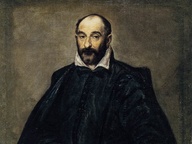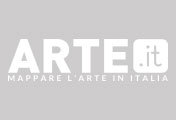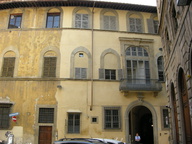The Remains of the Day / Decisive Moments / The positive Italy of Stefano Robino. Photographs 1951-1969
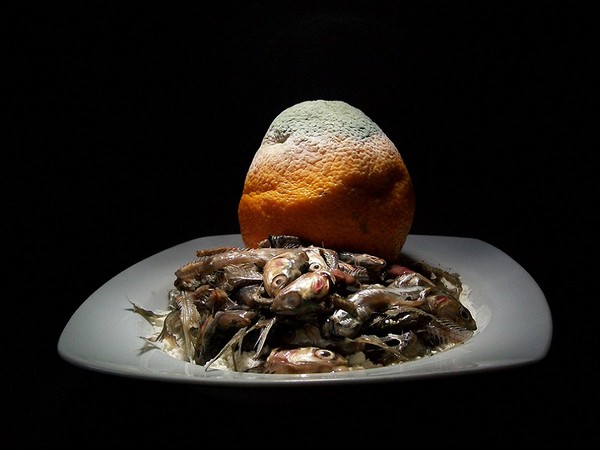
Dario Caputo, 2013
From 06 Febbraio 2015 to 12 Aprile 2015
Venice
Place: Casa dei Tre Oci
Address: Fondamenta delle Zitelle 43
Times: 10am-06pm; closed Tuesday
Telefono per informazioni: +39 041 2412332
E-Mail info: info@treoci.org
Official site: http://www.treoci.org
The exhibition program of the Photographic Club La Gondola at the Casa dei Tre Oci within the review Tre Oci Three exhibition, will be divided into three sections:
The Remains of the Day, taking the title of a successful film by James Ivory, is the theme that has seen this year reflect 31 members of the Club. Two major areas of research.
The first, and perhaps most important, concerns the personal memory formed not by the main events of a lifetime but the small details, the particular marginal reverberations of trivial actions that due to the transfiguration photographic take on another value, symbolic and open to more meanings.
This is not to record the visual diary of a day (as the title might suggest) but give consistency to details of her own life, whether recent or distant. A kind of evocation intimate, deep, which make the viewer a participant.
Another possible interpretation is the paraphrase of the transience of life and the absence of authentic reference values in contemporary society; you take into account the human artifacts that you want to take the break, the degradation they suffer through use of the time and their subsequent abandonment that often gives rise to new evidence of dense unexpected meanings.
But not only that; the human settlement of the area, the unstoppable advance of human settlements modify temporarily or permanently situations and environments for a long time considered immutable.
The authors of the Gondola dwell on these changes without an emphasis on reasons for intervention but, through the Notice of the simple observation, target or better stimulate reflection, whatever it is.
Participating members Andrea Avezzù, Antonio Baldi, Maurizio Braiato, Aldo Brandolisio, Fabri- Brugnaro uncle, Lorenzo Bullo, Nicola Bustreo, Dario Caputo, Paola Casanova, Carlo Chiapponi, Maria Teresa Crisigiovanni, Francesco Del Negro, Franco Furneri, Stefania Galluccio, Gianfranco Giantin, Mirella La Rosa, Matteo Miotto, Aldo Navoni, Stefano Pandiani, Sandro Pizzolato, John Puppini, Alessandro Rizzardini, David Salvadori, Giorgio Semen- which appears, Massimo Stefanutti, Maurizio Trifilidis, Fabrizio Uliana, Isabella Vegh, Giovanni Vio, Emilio Zangiacomi, Anna Zemella.
One room is dedicated to the winners of the reading portfolio which was held in January 2014 to the Three OIC: Decisive moments is the opportunity for a re-reading and enhancement of the current report in the light of new means of recording.
Three authors selected, who will present the winning entries.
Andrea White, with work Faces, which is well represented in the dualism between static and dynamic figure, the first full of unattainable beauty, the second transient and human. Elisa Gambino, rewarded for the work the Sons of the Wind that through an original expressive form proposes an emotional journey that combines good coverage and research. Monia Perissinotto with Havana, taking origin from that citizen journalism processes a defined project and authorial through the use of new digital technologies, showing a consistent use of colors and composition.
To enrich the exhibition offer, the Gondola has chosen to present this year Italy's Stefano Robino positive. Photographs 1951-1969.
Born in Turin in 1922, Stefano Robino photographer since the early 50's adhering to the "Cultural Group FIAT - Section Photography". The birth of his son drives him to concentrar- is the captivating theme of the family with which will make significant findings at national and international level; then his eyes will turn to the world of work, the aspects of solidarity and social reality most neglected.
Still inside the FIAT Grandi Motori, Robino becomes first head of the photo lab (1965) and later (1971) in charge of the advertising.
In 1971 Grandi Motori Trieste publishes its volume over the same plant of Turin, in 2002 the Piedmont Region furnishes with 99 panels of his photographs the offices of the management and development of Human Resources in the former headquarters building of the SEI
The story of photographic Stefano Robino is a sort of link between the production of the first amateur 50s strongly conditioned by the last layers of neorealism and solutions intimating outcrops as you feel the first signs of the boom statement.
The photographers pay increasing attention to the family environment seen with heat participate pativo and not, as suggested by the neo-realist vision, as extreme synthesis of ungrateful living condition.
There are many issues addressed by the author to witness to a restlessness of the look that surpasses conventions and stylistic amateur.
Significant examples are the landscape, the suburbs, factories dark tones and desolate far from Arcadian visions of many amateur photographers; even grazing sheep, the theme of the most abused, are seen with surprising originality.
It is said that the family is often a pretext for agile and original compositions, full of freshness narrative; in this context it is important to portraiture, never dull and devoid of rhetoric.
Robino proves especially reporter of the highest quality; the extraordinary sequence of the departure of the transatlantic "Cristoforo Colombo", leading away from the homeland hundreds of migrants is one of the most beautiful pages of photography in those years; the strug- people melancholy of farewells and moving figures of family members in a final prosthesis SA- lute are rendered with emotional, heartfelt participation.
Robino confirms its qualities also in the series "Children gardens" and "procession" where you can still feel the reflexes of the season neorealist but it does not prevent the author to assert his authorial caliber.
Last but not least the photographic works dedicated to the work environment, the FIAT Grandi Motori, where the author has the opportunity to apply all his technical knowledge and operational. In the words of the President of the Photographic Club La Gondola, Manfredo Manfroi, "con- cluded by the parable of productive time, a conscious critical reading is now able to re-evaluate the work of Robino and give it the space it deserves in the history of Italian photography; a considerable weight, a safe and original track that maybe we still reserve some surprises. "
The Remains of the Day, taking the title of a successful film by James Ivory, is the theme that has seen this year reflect 31 members of the Club. Two major areas of research.
The first, and perhaps most important, concerns the personal memory formed not by the main events of a lifetime but the small details, the particular marginal reverberations of trivial actions that due to the transfiguration photographic take on another value, symbolic and open to more meanings.
This is not to record the visual diary of a day (as the title might suggest) but give consistency to details of her own life, whether recent or distant. A kind of evocation intimate, deep, which make the viewer a participant.
Another possible interpretation is the paraphrase of the transience of life and the absence of authentic reference values in contemporary society; you take into account the human artifacts that you want to take the break, the degradation they suffer through use of the time and their subsequent abandonment that often gives rise to new evidence of dense unexpected meanings.
But not only that; the human settlement of the area, the unstoppable advance of human settlements modify temporarily or permanently situations and environments for a long time considered immutable.
The authors of the Gondola dwell on these changes without an emphasis on reasons for intervention but, through the Notice of the simple observation, target or better stimulate reflection, whatever it is.
Participating members Andrea Avezzù, Antonio Baldi, Maurizio Braiato, Aldo Brandolisio, Fabri- Brugnaro uncle, Lorenzo Bullo, Nicola Bustreo, Dario Caputo, Paola Casanova, Carlo Chiapponi, Maria Teresa Crisigiovanni, Francesco Del Negro, Franco Furneri, Stefania Galluccio, Gianfranco Giantin, Mirella La Rosa, Matteo Miotto, Aldo Navoni, Stefano Pandiani, Sandro Pizzolato, John Puppini, Alessandro Rizzardini, David Salvadori, Giorgio Semen- which appears, Massimo Stefanutti, Maurizio Trifilidis, Fabrizio Uliana, Isabella Vegh, Giovanni Vio, Emilio Zangiacomi, Anna Zemella.
One room is dedicated to the winners of the reading portfolio which was held in January 2014 to the Three OIC: Decisive moments is the opportunity for a re-reading and enhancement of the current report in the light of new means of recording.
Three authors selected, who will present the winning entries.
Andrea White, with work Faces, which is well represented in the dualism between static and dynamic figure, the first full of unattainable beauty, the second transient and human. Elisa Gambino, rewarded for the work the Sons of the Wind that through an original expressive form proposes an emotional journey that combines good coverage and research. Monia Perissinotto with Havana, taking origin from that citizen journalism processes a defined project and authorial through the use of new digital technologies, showing a consistent use of colors and composition.
To enrich the exhibition offer, the Gondola has chosen to present this year Italy's Stefano Robino positive. Photographs 1951-1969.
Born in Turin in 1922, Stefano Robino photographer since the early 50's adhering to the "Cultural Group FIAT - Section Photography". The birth of his son drives him to concentrar- is the captivating theme of the family with which will make significant findings at national and international level; then his eyes will turn to the world of work, the aspects of solidarity and social reality most neglected.
Still inside the FIAT Grandi Motori, Robino becomes first head of the photo lab (1965) and later (1971) in charge of the advertising.
In 1971 Grandi Motori Trieste publishes its volume over the same plant of Turin, in 2002 the Piedmont Region furnishes with 99 panels of his photographs the offices of the management and development of Human Resources in the former headquarters building of the SEI
The story of photographic Stefano Robino is a sort of link between the production of the first amateur 50s strongly conditioned by the last layers of neorealism and solutions intimating outcrops as you feel the first signs of the boom statement.
The photographers pay increasing attention to the family environment seen with heat participate pativo and not, as suggested by the neo-realist vision, as extreme synthesis of ungrateful living condition.
There are many issues addressed by the author to witness to a restlessness of the look that surpasses conventions and stylistic amateur.
Significant examples are the landscape, the suburbs, factories dark tones and desolate far from Arcadian visions of many amateur photographers; even grazing sheep, the theme of the most abused, are seen with surprising originality.
It is said that the family is often a pretext for agile and original compositions, full of freshness narrative; in this context it is important to portraiture, never dull and devoid of rhetoric.
Robino proves especially reporter of the highest quality; the extraordinary sequence of the departure of the transatlantic "Cristoforo Colombo", leading away from the homeland hundreds of migrants is one of the most beautiful pages of photography in those years; the strug- people melancholy of farewells and moving figures of family members in a final prosthesis SA- lute are rendered with emotional, heartfelt participation.
Robino confirms its qualities also in the series "Children gardens" and "procession" where you can still feel the reflexes of the season neorealist but it does not prevent the author to assert his authorial caliber.
Last but not least the photographic works dedicated to the work environment, the FIAT Grandi Motori, where the author has the opportunity to apply all his technical knowledge and operational. In the words of the President of the Photographic Club La Gondola, Manfredo Manfroi, "con- cluded by the parable of productive time, a conscious critical reading is now able to re-evaluate the work of Robino and give it the space it deserves in the history of Italian photography; a considerable weight, a safe and original track that maybe we still reserve some surprises. "
SCARICA IL COMUNICATO IN PDF
aldo brandolisio ·
paola casanova ·
gianfranco giantin ·
andrea avezz ·
antonio baldi ·
maurizio braiato ·
fabri zio brugnaro ·
lorenzo bullo ·
nicola bustreo ·
dario caputo ·
carlo chiapponi ·
maria teresa crisigiovanni ·
francesco del negro ·
franco furneri ·
stefania galluccio ·
mirella la rosa and oth
COMMENTI

-
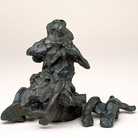 Dal 16 aprile 2024 al 15 settembre 2024
Venezia | Gallerie dell’Accademia
Dal 16 aprile 2024 al 15 settembre 2024
Venezia | Gallerie dell’Accademia
Willem de Kooning and Italy
-
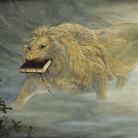 Dal 17 aprile 2024 al 22 settembre 2024
Venezia | Ateneo Veneto
Dal 17 aprile 2024 al 22 settembre 2024
Venezia | Ateneo Veneto
-
 Dal 17 aprile 2024 al 24 novembre 2024
Venezia | Procuratie Vecchie
Dal 17 aprile 2024 al 24 novembre 2024
Venezia | Procuratie Vecchie
-
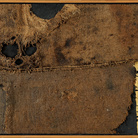 Dal 17 aprile 2024 al 16 giugno 2024
Venezia | Galleria Giorgio Franchetti alla Ca’ d’Oro
Dal 17 aprile 2024 al 16 giugno 2024
Venezia | Galleria Giorgio Franchetti alla Ca’ d’Oro
-
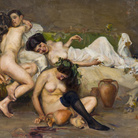 Dal 13 aprile 2024 al 28 luglio 2024
Treviso | Museo Luigi Bailo
Dal 13 aprile 2024 al 28 luglio 2024
Treviso | Museo Luigi Bailo
-
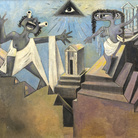 Dal 13 aprile 2024 al 16 settembre 2024
Venezia | Collezione Peggy Guggenheim
Dal 13 aprile 2024 al 16 settembre 2024
Venezia | Collezione Peggy Guggenheim

